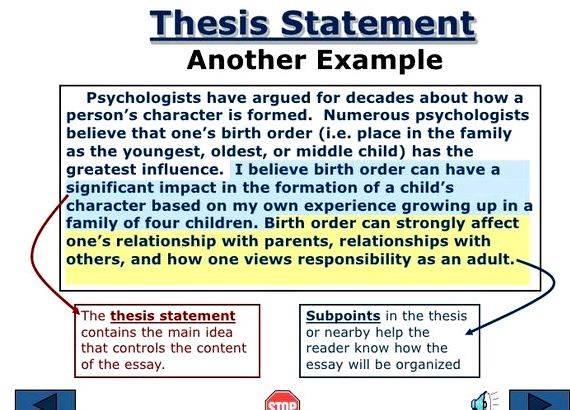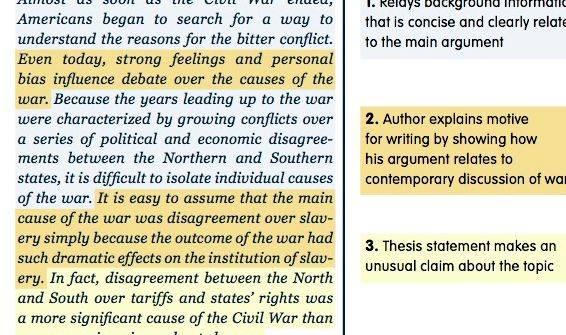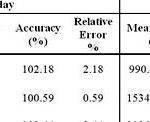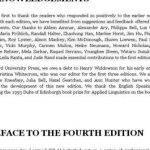Table of contents
You finish your thesis with a conclusion and a discussion. These are two different sections or parts, but sometimes it’s difficult to separate the two. This article discusses these two parts and the information that each part must, at a minimum, contain.
What does a conclusion look like?
The purpose of a conclusion is to answer your research question. Begin, with repeating your research question. However, don’t simply reiterate the research question, but integrate an explanation of it into the rest of the section’s discussion.
Then give the conclusions that you draw based on the results of your research (use the key results that are most relevant for answering your research question).
Finally, answer the main question and explain how you have come to this conclusion. Don’t just list the question with the answer below it, but carefully explain it and incorporate it into the rest of the text. Provide the raw observations and don’t interpret.
Example 1: Provide raw observations
Raw observation. Ten respondents agreed with the proposition that elephants are wonderful animals and six disagreed. Thus, the majority was in agreement.
Interpretation. Ten respondents agreed with the proposition that elephants were wonderful animals and six disagreed. This shows that ten people were very impressed by the animal’s character and that six people hated elephants.
In terms of verb tense, in the conclusion you use the present (simple) tense when you present facts, and you use the past tense or present perfect when you refer to the research that you have done.
Example 2: Verb tense in the conclusion
Facts in the present (simple) tense.
Company X currently has no clear vision and mission. The company also does not make (is not making) good use of social media to sell its products.
Your research in the past tense. This research examined whether Company X does have a clear vision and mission […] The results showed that Company X … […] The researcher also analyzed when …
Your research in the present perfect tense. This research has examined whether Company X does have a clear vision and mission […] The results have shown that Company X … […] The researcher has also analyzed when …
The length of the conclusion should be between 200 and 400 words. Pay attention:
- Did you use a hypothesis instead of a research question? Then indicate whether the hypothesis holds true.
- Do not provide any new information in the conclusion. Any new information belongs earlier in the thesis.
- Do not give examples in your conclusion, because you should have already worked out your conclusions (with examples) in the rest of your research. For example, if you conclude that the financial crisis has negatively affected the revenues of banks, then you should not also mention that Bank XYZ has had, ‘for example’, 20% less revenue in 2009 than in 2007.
Conclusion checklist
The research questions have been answered.
The first person has not been used.*
* Use of the first person ‘I’ is often incorrect and prohibited in many studies but is accepted in some studies. Find out how your study treats the first person before you use it. In any case, we recommend that you don’t use the first person anywhere but in the Preface.

Do you want to know more about this subject?
What does the discussion look like?
In the discussion, you write more interpretatively and colorfully about the results. Whereas you kept it concise in the conclusion, you write more in-depth about the subject in the discussion section.
Here you evaluate the research: you may discuss your expectations of possible causes of and consequences of the results, possible limitations and suggestions for follow-up research. Write the discussion, just as the conclusion, primarily in the present tense.
Interpretation of results
Start your discussion with the validity of your research design. Then discuss the results and indicate whether they meet your expectations. In this section, you will give explanations for meeting or not meeting these expectations.
These expectations can come from relevant literature. but they may also be based on your own common sense. In any case, describe how your results fit with the framework that you have drawn in the first chapter (introduction. motivation, theoretical framework. and research questions or hypotheses).
Also show how the findings provide new or different insights into what was already known. Elaborate on all possibilities: what exactly have you now shown?
Limitations of your research
Present the limitations of your research in a new paragraph within the discussion. Describe which observations you can make based on the research results. These remarks may be of an advisory nature.
If there are some side notes that can be made to the research or you were hindered by certain limitations, these issues can explain of the results you obtained. Name these, but also explain how these factors can be improved in future research.
Pay attention that you don’t run down your entire research project; you’re not supposed to provide a list of all your errors. These should have been carefully considered before you started your research.
Recommendations for further research
The discussion ends with a paragraph of suggestions for possible follow-up research. How can other researchers build upon your research? Do not write something along the lines of ‘there is still much research needed’.
You’re not supposed to give a list of what others should look into for you in order to complete your research, but rather give suggestions for a separate, follow-up study in response to your research.
Discussion checklist
The validity of the research is demonstrated.
Table of contents
You finish your thesis with a conclusion and a discussion. These are two different sections or parts, but sometimes it’s difficult to separate the two. This article discusses these two parts and the information that each part must, at a minimum, contain.
What does a conclusion look like?
The purpose of a conclusion is to answer your research question. Begin, with repeating your research question. However, don’t simply reiterate the research question, but integrate an explanation of it into the rest of the section’s discussion.
Then give the conclusions that you draw based on the results of your research (use the key results that are most relevant for answering your research question).
Finally, answer the main question and explain how you have come to this conclusion. Don’t just list the question with the answer below it, but carefully explain it and incorporate it into the rest of the text. Provide the raw observations and don’t interpret.
Example 1: Provide raw observations
Raw observation. Ten respondents agreed with the proposition that elephants are wonderful animals and six disagreed. Thus, the majority was in agreement.
Interpretation. Ten respondents agreed with the proposition that elephants were wonderful animals and six disagreed. This shows that ten people were very impressed by the animal’s character and that six people hated elephants.
In terms of verb tense, in the conclusion you use the present (simple) tense when you present facts, and you use the past tense or present perfect when you refer to the research that you have done.
Example 2: Verb tense in the conclusion
Facts in the present (simple) tense. Company X currently has no clear vision and mission. The company also does not make (is not making) good use of social media to sell its products.
Your research in the past tense. This research examined whether Company X does have a clear vision and mission […] The results showed that Company X … […] The researcher also analyzed when …
Your research in the present perfect tense. This research has examined whether Company X does have a clear vision and mission […] The results have shown that Company X … […] The researcher has also analyzed when …
The length of the conclusion should be between 200 and 400 words. Pay attention:
- Did you use a hypothesis instead of a research question? Then indicate whether the hypothesis holds true.
- Do not provide any new information in the conclusion. Any new information belongs earlier in the thesis.
- Do not give examples in your conclusion, because you should have already worked out your conclusions (with examples) in the rest of your research. For example, if you conclude that the financial crisis has negatively affected the revenues of banks, then you should not also mention that Bank XYZ has had, ‘for example’, 20% less revenue in 2009 than in 2007.
Conclusion checklist
The research questions have been answered.
The first person has not been used.*
* Use of the first person ‘I’ is often incorrect and prohibited in many studies but is accepted in some studies. Find out how your study treats the first person before you use it. In any case, we recommend that you don’t use the first person anywhere but in the Preface. Do you want to know more about this subject?
What does the discussion look like?
In the discussion, you write more interpretatively and colorfully about the results. Whereas you kept it concise in the conclusion, you write more in-depth about the subject in the discussion section.
Here you evaluate the research: you may discuss your expectations of possible causes of and consequences of the results, possible limitations and suggestions for follow-up research. Write the discussion, just as the conclusion, primarily in the present tense.
Interpretation of results
Start your discussion with the validity of your research design. Then discuss the results and indicate whether they meet your expectations. In this section, you will give explanations for meeting or not meeting these expectations.
These expectations can come from relevant literature. but they may also be based on your own common sense. In any case, describe how your results fit with the framework that you have drawn in the first chapter (introduction. motivation, theoretical framework. and research questions or hypotheses).
Also show how the findings provide new or different insights into what was already known. Elaborate on all possibilities: what exactly have you now shown?
Limitations of your research
Present the limitations of your research in a new paragraph within the discussion. Describe which observations you can make based on the research results. These remarks may be of an advisory nature.
If there are some side notes that can be made to the research or you were hindered by certain limitations, these issues can explain of the results you obtained. Name these, but also explain how these factors can be improved in future research.
Pay attention that you don’t run down your entire research project; you’re not supposed to provide a list of all your errors. These should have been carefully considered before you started your research.
Recommendations for further research
The discussion ends with a paragraph of suggestions for possible follow-up research. How can other researchers build upon your research? Do not write something along the lines of ‘there is still much research needed’.
You’re not supposed to give a list of what others should look into for you in order to complete your research, but rather give suggestions for a separate, follow-up study in response to your research.
Discussion checklist
The validity of the research is demonstrated.






 Fundsforngos org write proposal thesis
Fundsforngos org write proposal thesis Hplc method development and validation thesis writing
Hplc method development and validation thesis writing Sample dedication and acknowledgement for thesis writing
Sample dedication and acknowledgement for thesis writing Aau library electronics thesis proposals
Aau library electronics thesis proposals Writing your thesis sage publications london
Writing your thesis sage publications london






